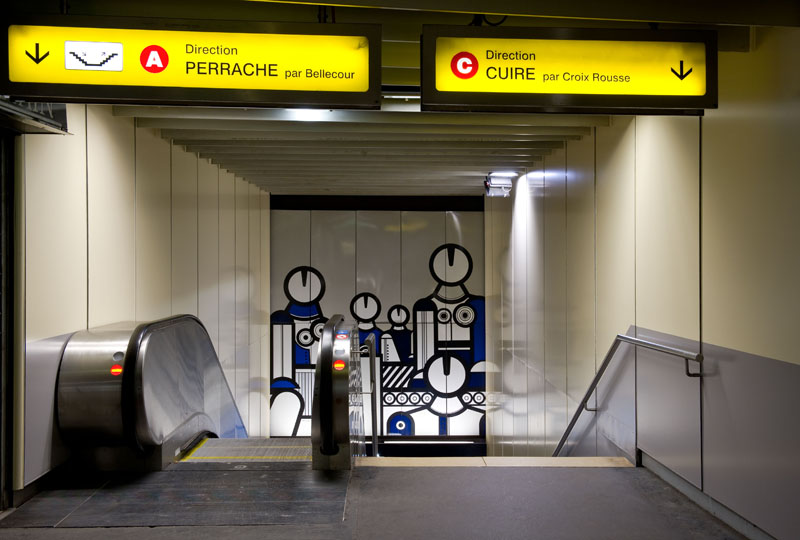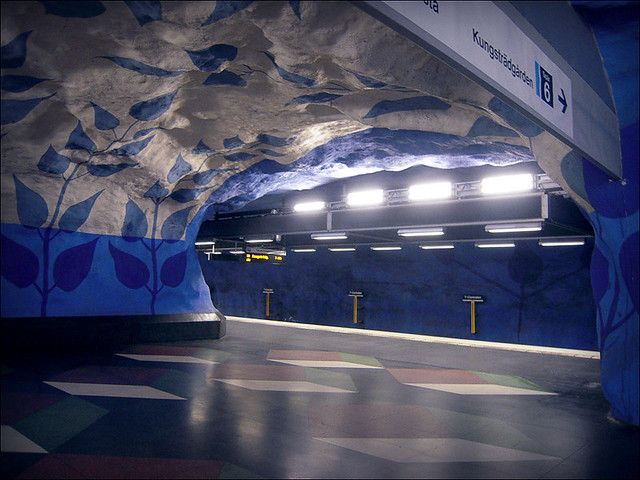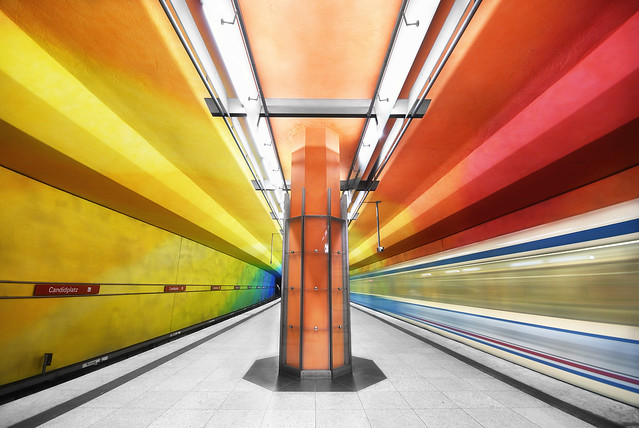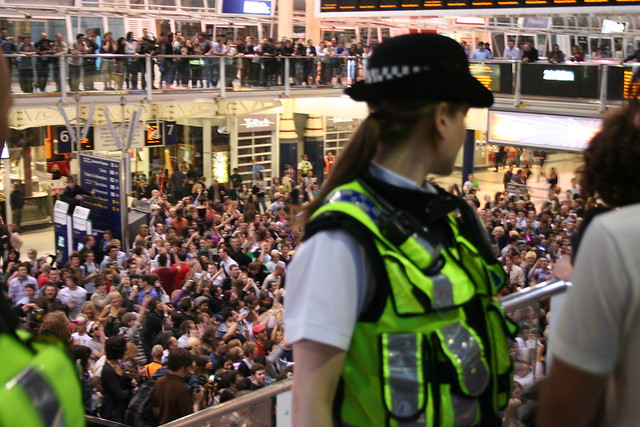Post by Charlotte Boffetti.
Undoubtedly, one of the primary reasons for building subways, streetcars, and cable cars is to improve urban mobility. These systems are designed to transport passengers from one destination to another. And in the minds of many transit planners and engineers, this unfortunately tends to be the sole motivation – however, I feel that public transit is much more than a simple means of transport.
Around the world, through planned and/or spontaneous efforts by passengers and cities, surprising, beautiful and unconventional uses of the transit network often emerge.
The transport network can be a place of expression, of art and even fun. As an element of an urban space, people find many ways to reappropriate a public transit system.
For example, subways are often playgrounds for street artists. It offers a huge platform for expression and diffusion. Sometimes the goal is just to create a nicer environment and sometimes it is to convey a political message. I, myself, am really sensitive to all forms of expressions found in the transport network that makes my travel more interesting.
In my city of Lyon, France, street art can be found adjacent to more conventional art. Since the subway was opened in 1978, it has displayed many different types of artwork. Unfortunately, over the years, many of these displays have been neglected. So last year, the director of transportation started an “Art Metro” initiative to upgrade the artwork and make it more noticeable for passengers.
On one hand, one of the goals was to take art out of museums and make it accessible to all members of the public, while on the other hand, it was to improve the subway’s overall design and enhance passengers travel.

Public art in Hotel de Ville Station on Lyon’s Metro Line A. Image from Systral.
Many cities have taken similar kind of initiatives which sought to improve the transport network’s appearance, and thereby in hopes of improving the overall travel experience.
But does this really change anything for the users taking transit? In my opinion, art really does enhance the travel experience. But moreover it changes a transport system’s representation and perception. A subway’s representation can be changed from a long, cold and grey tunnel to a colourful and welcoming place.
In turn, the transport network becomes so much more than a simple place of passage, it becomes a place of life. And this becomes especially important, if you’re like me, where I find myself spending more than 2 hours each day on a train.

London Subway, 1970s-1980s. Reading, sleeping, talking, the transport network is a place of life. Image by Bob Mazer from Telegraph.co.uk.
Aside from art, a transit network is also a social gathering space.
For instance, a few years ago the London Tube hosted events called the “Circle Line Party”. Participants would decorate a subway train, bring musical equipment, food, alcohol and party into this unconventional space. The participants claim that these parties are not meant to disrupt travel, but to “reclaim the public space from advertisers and give it back to the people to whom it belongs”.
In 2008, Mayor Boris Johnson banned drinking alcohol on public transport and on the eve of the ban, thousands of people joined in the subway to celebrate the last night of legal drinking. Unfortunately, when the celebrations came to a close, several passengers and staff were injured along with several arrests.
I feel that most people have enough self-control and self-discipline to be afforded this privilege should they remain respectful to other passengers.

Two ladies drinking responsibly on the London Tube – 1970s-1980s. Image by Bob Mazzer from Telegraph.co.uk.
My point is not to encourage drinking in public space, but to question how we should use public transport and how certain activities should be regulated.
What is important to understand is that the transport network is not merely a neutral place with just one simple function. Of course a transport system is used for mobility, but as we can see from the examples above, it is also a place of expression, of creation and sometimes of recreation.
Integrating art, colour and unconventional elements in the transport network can improve the travel experience for passengers, and thus alter its perception and its role in the eyes of the public.
If you can think of any other unique and/or interesting examples/project that has enhanced and altered a passenger’s journey on public transit, please feel free to share!



